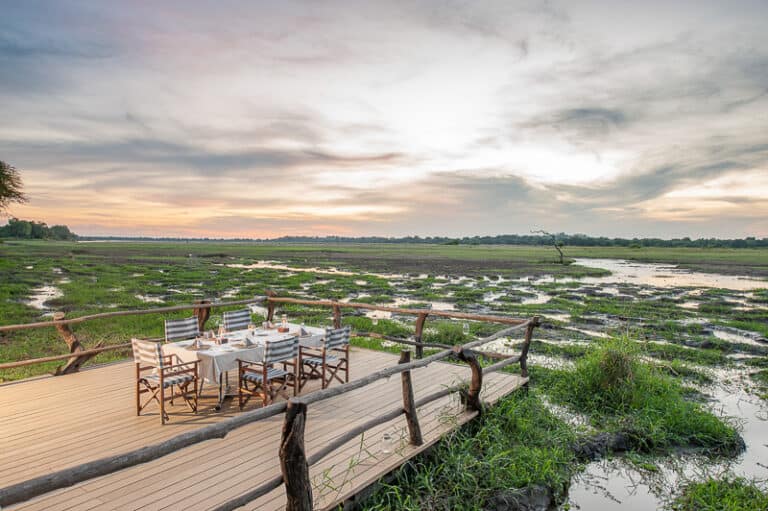If you’re planning to come on safari, you are probably asking yourself when is the best time to visit Zambia. We’ll bring you some answers in this blog.
Being in the tropics, Zambia is spoiled with gorgeous sunlight and usually mild to hot temperatures.
We tend to split the year into 2 seasons in terms of safari seasons: the dry and wet seasons. But it would be more accurate to divide the Zambian year into roughly 3 climate periods.
So, let’s start with them.

Three climate periods:
- December to April – warm and wet. These are the months with torrential rains, the peak of rains being usually in January and February. The showers are irregular but tend to develop more in the afternoon in impressive thunderstorms. Temperatures will be around 17 to 27 degrees centigrade.
- May to August – dry and cool. May and June are qualified as our “winter months”. They will be the coldest of the year, with temperatures as low as 8-9 degrees (depending on area and altitude) in the mornings and evenings but mild by midday. It is dry with clear skies and no air pollution. July and August will become hotter and even dryer while dust becomes prevalent.
- September to November – dry and hot. The weather will remain very dry until the end of October. The temperatures will start soaring to reach mid to high 30’s centigrade. Relief will only come from bouts of rain. The first storms usually arrive at the beginning of November. Still, they don’t last. The coolness is quickly replaced by hot and sticky temperatures again – until real rains come (usually towards the end of December).
Are you planning a safari? Download our in depth Zambian Safari planning guide!
Two safari seasons:
- Dry season – May to October. By far the best Zambian safari period because of the dry weather and conditions. The vegetation will quickly thin out from May to form a desolate landscape by August, and the access to water is more limited. It means wildlife concentrates along the rivers or various waterholes, making the game viewing more rewarding. Lion activity is at its peak as buffalo groups gather in large herds. Temperatures in May and June will be the coolest and gradually increase each passing week to reach highs in October (October is VERY hot). The remote bush camps will usually open from late May until late October when roads are drivable. The dry season will be busier in terms of visitors. Still, one can find great deals in May, June, and November, when many camps consider these “shoulder” months.
- Wet season – November to April. With the risk of rains starting in November, remote camps usually close at this time as roads become too muddy to be driven on. Permanent lodges will remain open in November and December but are most likely to close in January, February, and March during the peak of the rains (referred to as “green season”). Most will reopen in April as the rains fade away. The vegetation will be lush and green, a dramatic change compared to the dry season. Water will be available everywhere, and animals will scatter away from the rivers, making observation more challenging. Avid birders may seek this particular time of year when the birdlife is at its peak due to abundant foliage and insects. Resident birds display their breeding plumage and migratory species come from the northern hemisphere. Low or shoulder season rates are often attractive, and camps may be quieter.
Note: the opening periods of camps will vary per national park as infrastructures may differ along with wildlife habits and the nature of the terrain (ex Liuwa plains, Bangweleu, Busanga plains). Always ask a safari specialist for specific opening seasons and travel conditions.

Your packing list will vary depending on these seasons. Check our “what to pack” blog for more information and access to our helpful packing list.







